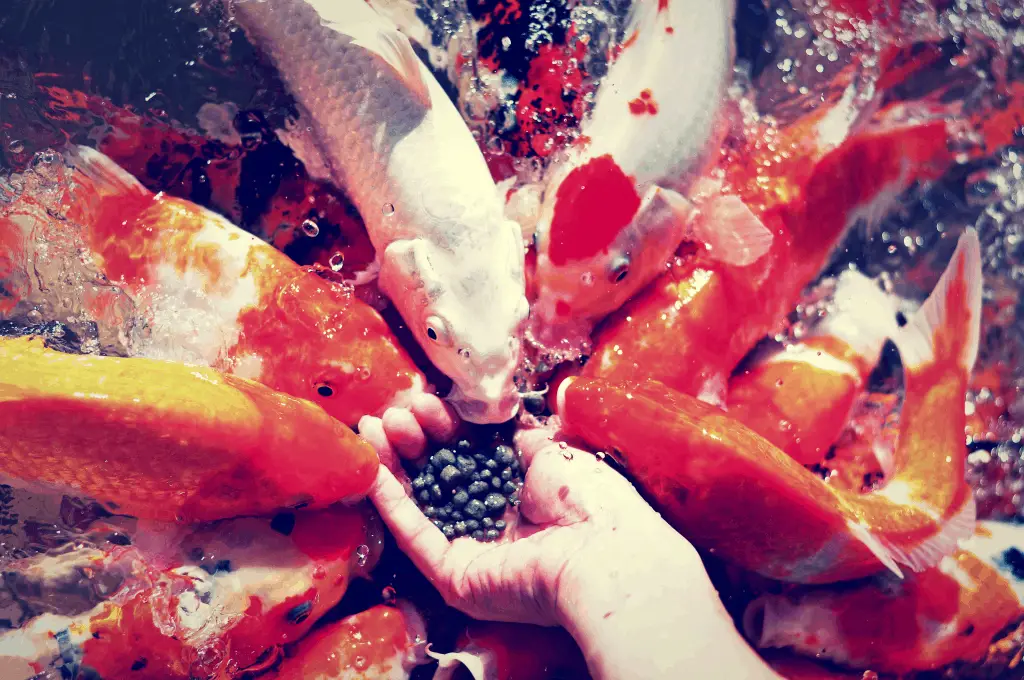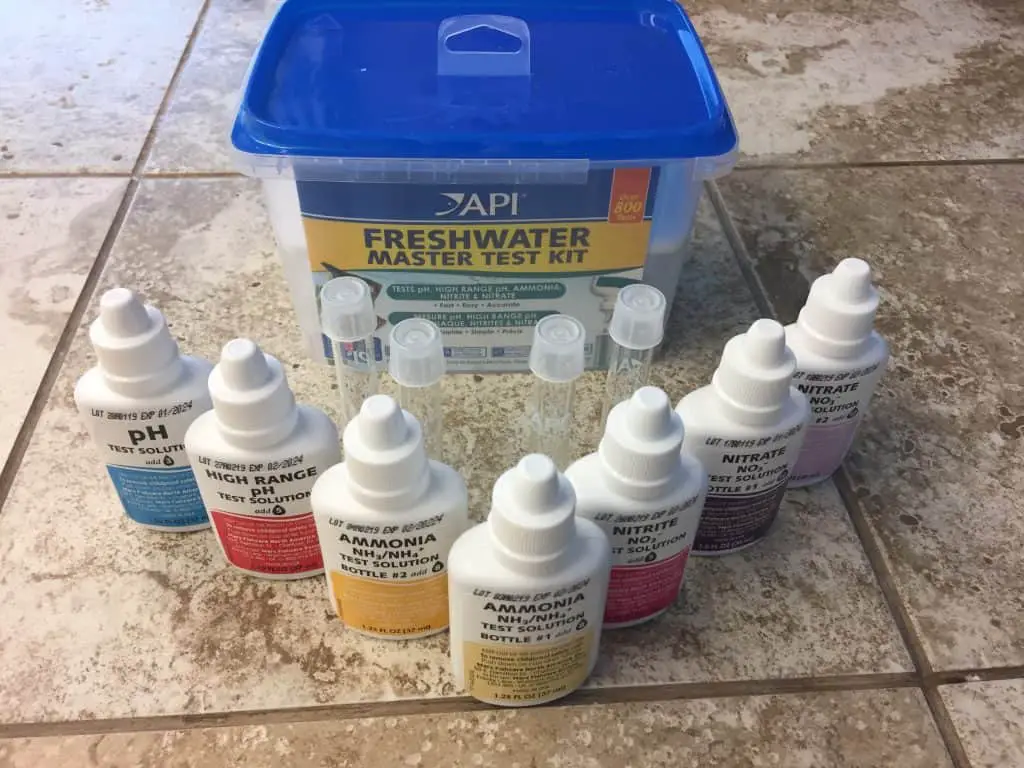So, how long do koi fish live? These fish can live to be anywhere from 20 to over 200 years old. The average life span is between 20-50 years old. If you are considering keeping koi fish you sure need some real commitment!
The longest-lived koi fish is a female named Hanako. She lived to be approximately 226 years old! How were scientists even able to confirm her age? Like counting the growth rings of a tree, rings on the scales of koi may be examined to determine their age.
How long will My koi fish live?
Koi fish have not always decorated ponds; they were originally bred for food in Japan. A few of these colorful koi impressed their breeders so much they became highly regarded. This began their journey into ponds around the world.
Seeing large brilliantly colored koi fish inspired me to look into keeping them myself. Before I purchased a koi fish, life expectancy was a serious consideration, and it should be yours as well. Their life span determines the ownership commitment, which is crucial to ensuring that you will be able to give your koi a lifelong home.
If you are one of those people that gets bored with a pet after just a year or so, koi aren’t for you.
While your koi may not outlive generations of your family like Hanako, there are steps you can take to help them be a member of your family for many years.
Factors that affect the lifespan of koi fish
There are several key factors that have the potential to either positively or negatively impact the life span of your koi fish:
- Genetics
- Nutrition
- Water Quality and Environment
- Wintering
- Genetics
While proper care is important to the life span of koi fish, genetics also play a role. Excellent genetics are the foundation of the good health needed to help them live long and prosper.
Koi fish originated in the mountains of Japan from three strains of common carp. Japanese koi breeders began selectively breeding these fish generations ago. Koi breeding in Japan can be traced back as far as 1820.
These Japanese breeders have successful breeding techniques, strict culling methods, and water quality that the fish thrive in. This gives them a distinct advantage in producing healthy fish. Additionally, the length of time the Japanese have been breeding these fish means that their gene pool is stronger. They have bred many, many generations of healthy fish.
Koi fish breeding in America only originated approximately 100 years ago. While American breeders may also produce genetically excellent koi, they are still perfecting the art. Accordingly, American koi generally do not live as long as their Japanese relatives. American koi are generally larger but the methods used to help them grow in size may shorten their overall life span.
While koi have been bred for centuries, new varieties are still being produced around the world today.
When shopping for koi, attempt to reduce their travel time as much as possible. Try to shop locally or if ordering online select the fastest shipping method. Travel causes stress or death no matter how good a koi’s genetics are.
Quality Nutrition

Koi need a healthy diet to live a long life. But what is the best food for koi fish? Always read the label of any food you consider purchasing, and look for the following ingredients:
Protein. The first ingredient should be either fish meal or soy.
Fats. Young koi need 10% fats and adults need 3% fats in their diet.
Carbohydrates. Look for rose hips, soybeans, corn, or wheat in the first 5 ingredients.
Vitamins and minerals. Koi need calcium, phosphorus, magnesium, potassium, and sodium.
In addition, to store-bought koi food, they also enjoy eating human foods such as watermelon, peas, rice, and shrimp. But please don’t feed them any “junk” food! Koi often snack on bugs and plants in their pond too.
Mealtime is also a bonding opportunity. Koi will greet you when they learn that your visit brings snacks, and they may eat from your hand. I love to hand feed my koi; it is fun to interact with them and it allows me to ensure that all my koi get the proper serving of food, not just the bold fish.
Koi owners must ensure their pond provides oxygen, which these fish need to digest their food. Before serving a meal, koi owners should consider the following:
Weather. Rain decreases the oxygen in the water, which negatively impacts digestion.
Environment. Koi need a quality air pump or a waterfall to provide their oxygen. Inspect your pump or waterfall regularly to ensure that it continues working. Do not feed them if it is broken or not functioning correctly. Adding plants to the pond also provides oxygen.
Water Quality and Environment

Water Quality
The water that your koi live in is the most significant factor of their life span. Living in poor quality water will cause your koi to experience stress and become more susceptible to diseases.
There are several water qualities that koi owners must carefully monitor. These include:
Chlorine. If like most people your tap water is treated and not from a well it likely contains chlorine. Koi cannot live in treated tap water; chlorine will kill them. As you set up your pond or add new water, you will need to treat the water to remove the chlorine.
Ammonia. Ammonia is caused by fish waste, deceased fish, and rotting plants or food. This substance will cause koi to become stressed and weaken their immune systems. Ammonia accumulates quickly as a result of overfeeding and overcrowded ponds. Never offer extra food or add too many koi fish to your pond. If your koi fish breed, look for good homes for their fry to prevent overcrowding.
pH. pH levels are regulated by hydrogen ions. High pH levels can create more toxic forms of Ammonia, making regular water testing important. Luckily for new fish keepers, koi can tolerate a wider range of pH levels than other fish.
Nitrites. Similar to Ammonia nitrites can kill koi, and also contribute to algae growth. Plants can help maintain a healthy nitrite level in your pond. If your pond frequently has algae blooms, testing the nitrite level would be wise.
With regular testing, maintaining these levels is simple. Home water test kits are available for purchase in stores or online. Or you may take a sample of water to an aquarium store and have it tested. If you are still learning about maintaining water quality get some advice as well. Knowledgeable employees can show you what products you need to balance these parameters.
Environment
While their water quality is crucial to a healthy life span, housing is also a very important consideration. There are 3 options for koi to live in; outdoor ponds, indoor ponds, and aquariums.
Outdoor Ponds
Most people keep koi in outdoor ponds due to their size. When designing their pond, consider the following:
Bigger is better. Your koi fish will grow quickly; make sure they have room to grow.
Sunlight. While ponds need some sunlight, too much sunlight will cause koi to overheat and encourages algae growth.
Depth. Koi ponds should be at least 5 feet deep. Be sure to check where power lines are buried on your property before digging.
Predators. Outdoor ponds must be protected against predators who like to eat fish.
Indoor Ponds
Some owners choose to build indoor ponds. Consider the following things when choosing this option:
Humidity. Ponds will add humidity indoors, which may be managed with fans.
Leaks. Always take special care to prevent leaks when designing an indoor pond.
Drainage. There will come a time when water must be drained; account for this in the design.
Lighting. Koi thrive in natural lighting. Underwater lights may be appealing to us, but they should not be kept on for extended periods of time so that the koi can sleep peacefully.
Weight. Water is heavy. At over 8 pounds a gallon you will have to seriously consider the placement of the pond. You may need to go so far as to reinforce your floor to bear the weight. For example, a 100-gallon aquarium weighs up to 800 pounds!
Aquariums
While koi may be kept in indoor aquariums, it is not recommended. They are best suited for pond life. Should you choose to do this, know that koi fish require a very large aquarium with a secure lid due to their size. These fish also must have an aggressive filtration system to manage their waste.
Wintering
Japanese winters can be extremely cold. This means that koi can survive in cold climates with proper koi pond winter preparation.
Koi actually hibernate during the winter. Most Japanese breeders allow their koi to hibernate and this practice contributes to a longer life span. This hibernation state is actually called “torpor” in koi fish and occurs at temperatures below 50°F.
Some koi owners opt to bring their koi inside or heat the outdoor pond to above 50° F. Should you do this, your koi will not hibernate. While this sounds like the most humane option to the human who is warm inside their house, this practice has the potential to shorten their life span.
The water only needs to be kept from freezing during this hibernation period.
Final Thoughts on Koi lifespan
There are many reasons that koi have become popular around the world. They are beautiful and easy to care for.
Koi even give dogs a run for their money. They can live longer than dogs, eat out of your hands, and they may even recognize their owners.
So spend the time and money to give your koi the best you can and they can live a lifetime!

